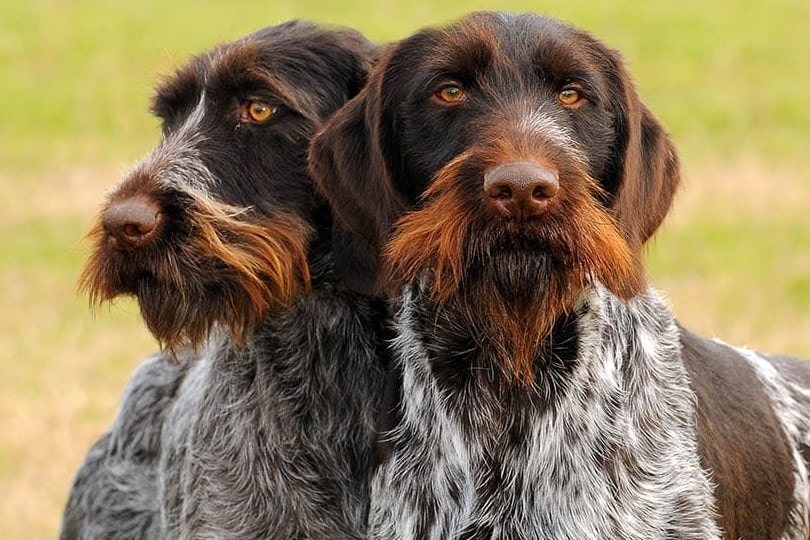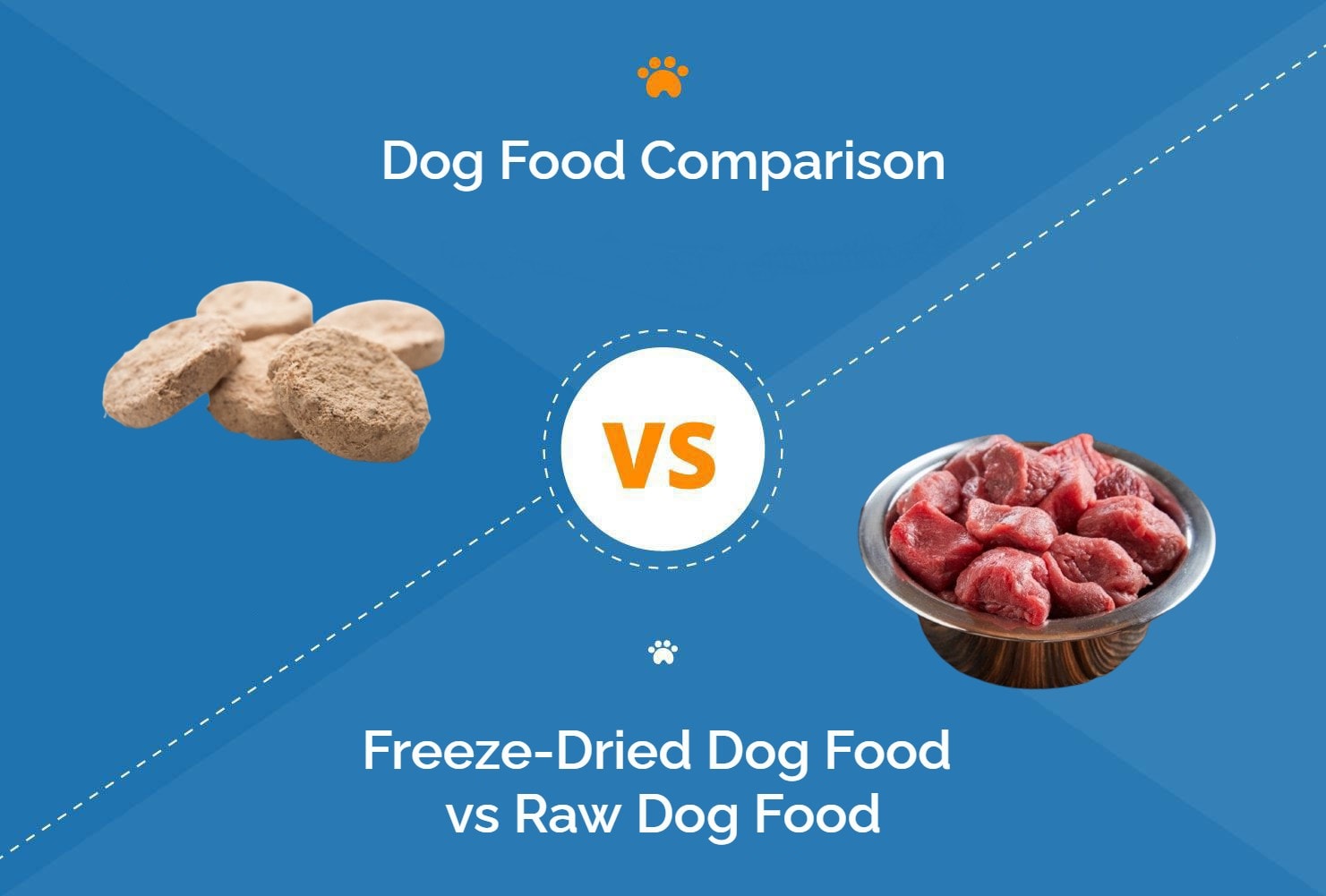Bullmastiff vs French Mastiff: The Key Differences (With Pictures)
Updated on
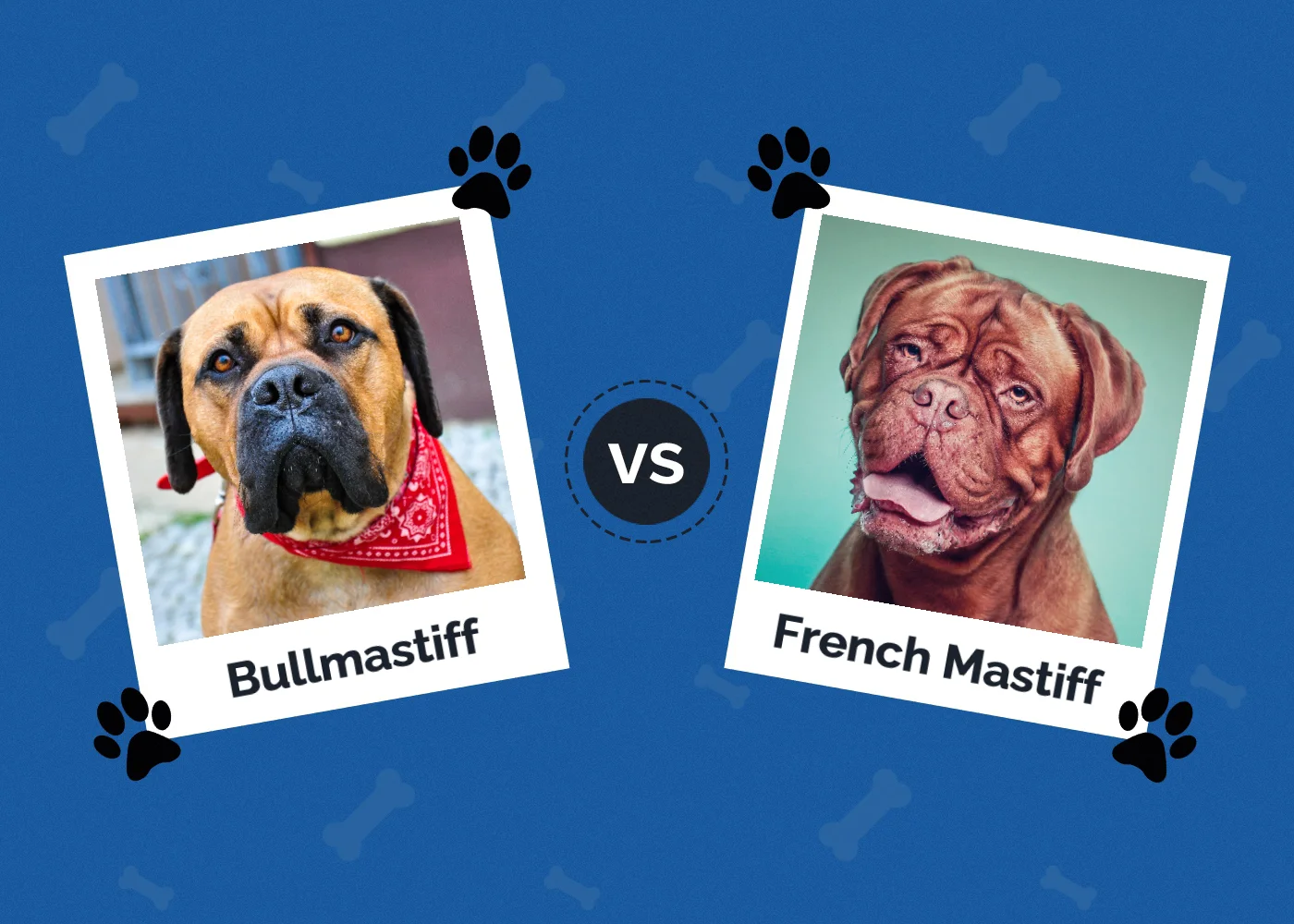
Think a Mastiff is the best fit for your home? That’s great! Mastiffs are loyal, courageous dogs that love their owners to the moon and back. However, every Mastiff type differs regarding looks, personality, and lifespan. The Bullmastiff and French Mastiff have similarities, but key differences will affect your overall experience with the two breeds.
In this post, we compare the two breeds so you can decide which one is right for your home. Let’s dive in!
Visual Differences
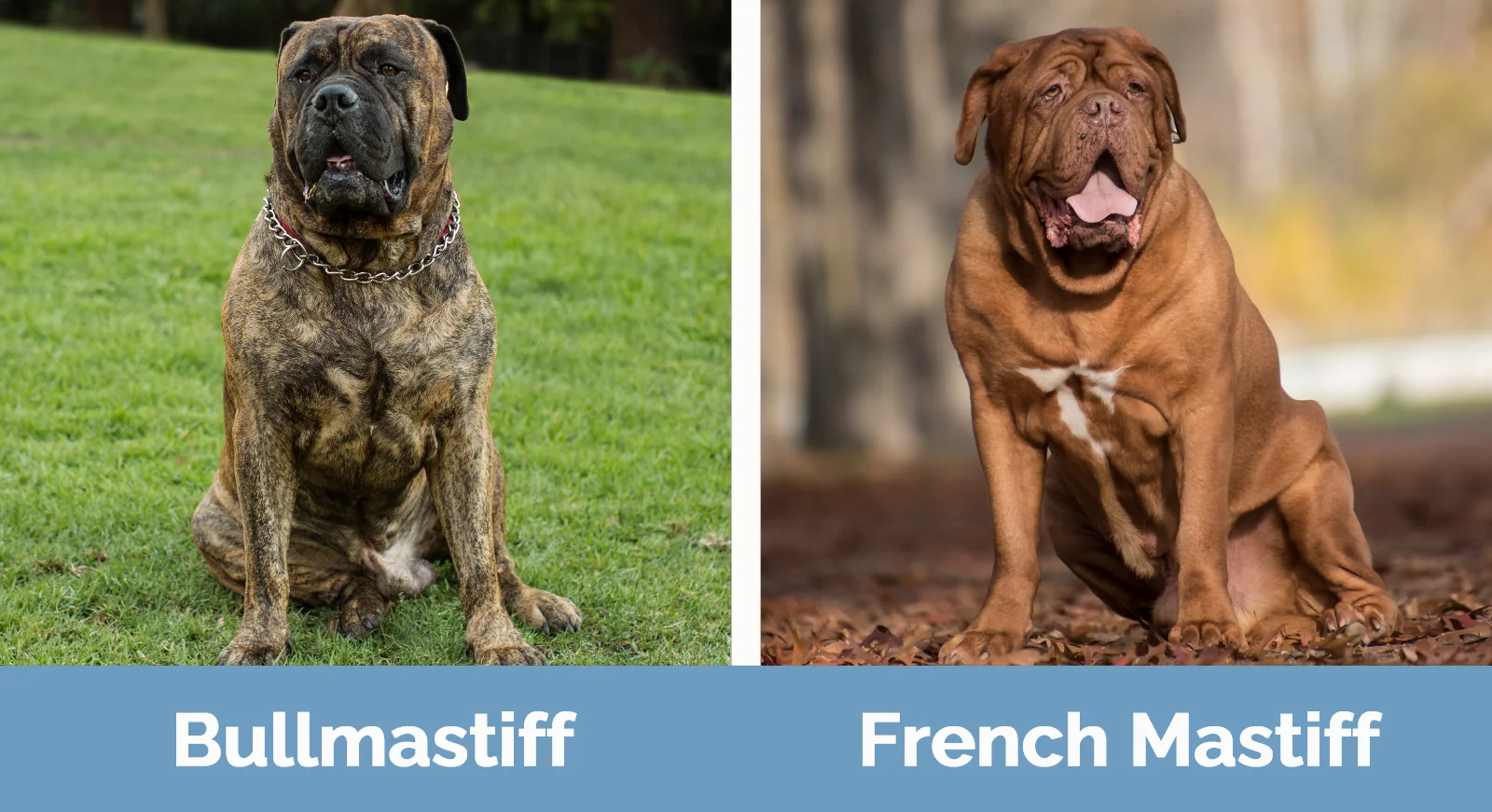
At a Glance
- Average height (adult): 24–27 inches
- Average weight (adult): 100–130 pounds
- Lifespan: 7–9 years
- Exercise: 1 hour daily
- Grooming needs: Moderate
- Family-friendly: Yes
- Other pet-friendly: Sometimes
- Trainability: Moderate
- Average height (adult): 23–27 inches
- Average weight (adult): 99+ pounds
- Lifespan: 5–8 years
- Exercise: 1 hour daily
- Grooming needs: High
- Family-friendly: Yes
- Other pet-friendly: Sometimes
- Trainability: Difficult
Bullmastiff Overview
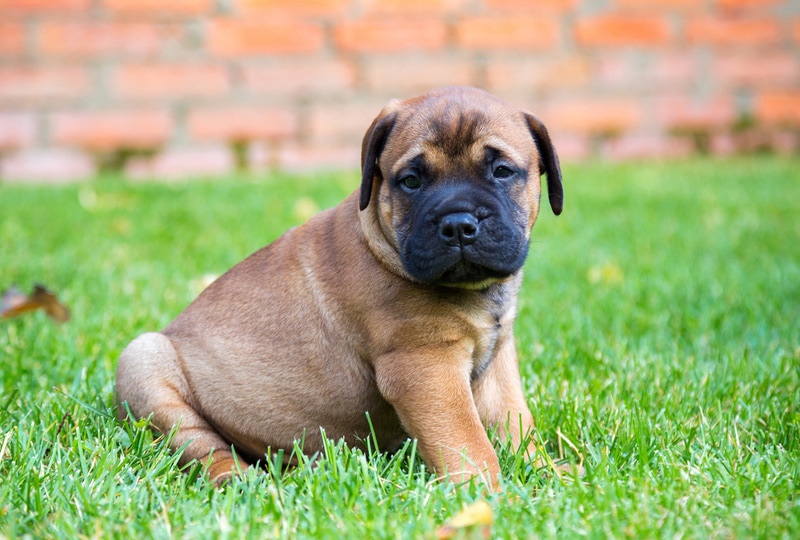
The Gamekeeper’s Night Dog
The term “poacher” will make any animal lover’s skin crawl, but the Bull Mastiff knows how to handle them.
In the 1860s, English aristocrats struggled to keep their game alive against the persistent poachers that snuck onto their properties. Poachers faced the death penalty, so they didn’t have much to lose if caught.
Instead, gamekeepers created a new breed of 60% Mastiff and 40% Bulldog. The result was an intelligent breed that was tough as nails, yet gentle enough to keep an intruder alive until the authorities arrived.
Bullmastiff Care
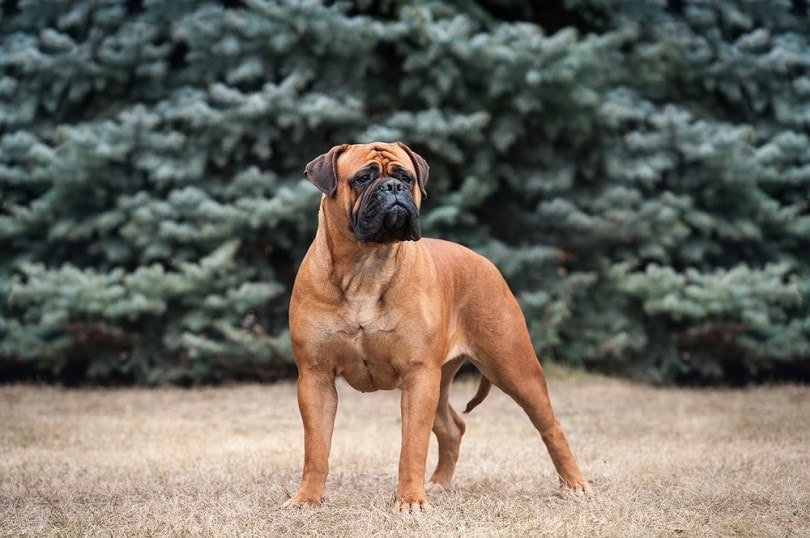
Exercise
Unlike other large breeds, Bullmastiffs don’t require as much exercise. They’re high-energy dogs that need a job but will do fine with moderate indoor and outdoor activity. Brisk walks, outdoor ball play, and indoor dog sports are all great options.
Interestingly, some Bullmastiffs are more laid back than others, so they may be less interested in playtime than others.
Training
No dog is easy to train, and Bullmastiffs are no exception. These dogs can be quite bull-headed and need a patient owner with experience raising dogs. Thankfully, Bullmastiffs excel when given strict routines and outshine in puppy training. They also do very well in hunting and scent training.
Grooming
Luckily, Bullmastiffs don’t require special grooming besides standard bathing, nail trims, or teeth brushing. They have short coats that shed seasonally, and they occasionally drool. Watch out for excessive dryness or oiliness of the coat, and your Bullmastiff will be good to go.
Do Bullmastiffs Make Good Family Dogs?
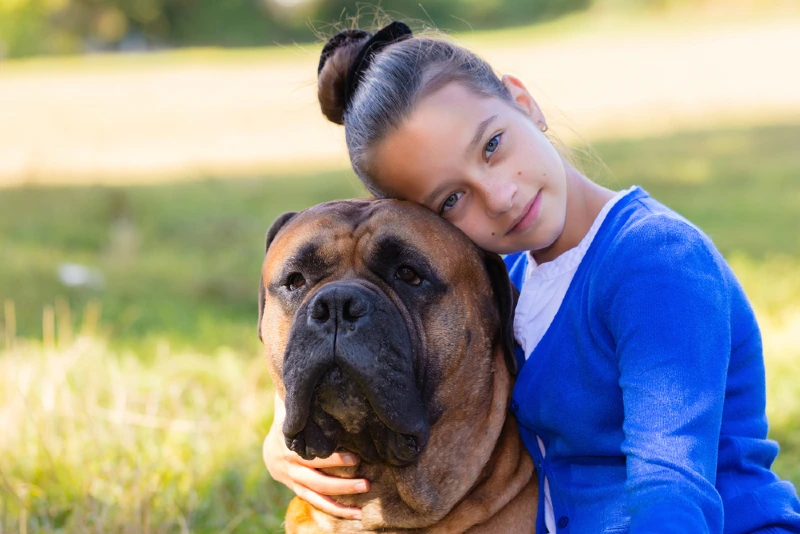
Bullmastiffs make excellent family dogs if the chosen family has experience handling dogs. These dogs are stubborn and need patient owners who will take the time to train them properly.
Bullmastiffs are fine around children if the children handle the dog correctly. They also don’t require much grooming. However, change can be difficult depending on the dog. Bullmastiffs may need more time to adjust to new houses or new babies.
Suitable for:
Bullmastiffs are best for semi-active families, or hunting families. The best families are those rooted in where they live.
French Mastiff Overview
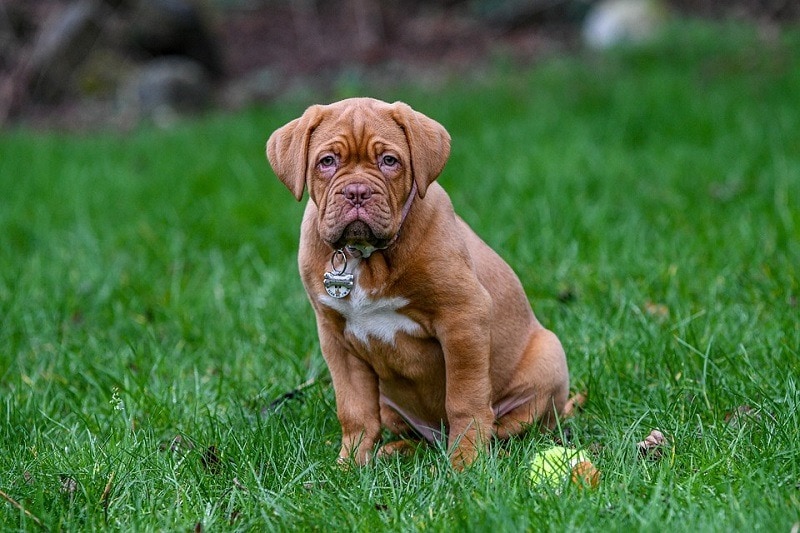
The Turner and Hooch Dog
French Mastiffs, or Dogue de Bordeaux, is a breed that is so ancient its origins are impossible to trace. A few theories suggest that the breed came from French indigenous tribes. Another suggests that Julias Caesar introduced the breed to France in the first century BC. It’s hard to say whose theory is correct.
We do know that Julias Caesar used Mastiffs for bloodshed sports and war during his reign. By the late 1700s, the French Mastiffs outgrew their bloodshed routes and were instead used to guard French estates like the Bullmastiff.
After the French Revolution, the breed served as cattle drovers on farms where they remained virtually unknown until the release of the 1989 film Turner and Hooch. The movie features Tom Hanks, a stuffy by-the-book detective, who inherits a junkyard dog after the owner is killed.
The junkyard dog is, of course, a drooly French Mastiff that sacrifices everything to protect its owner—including a delicious muffin.
French Mastiff Care
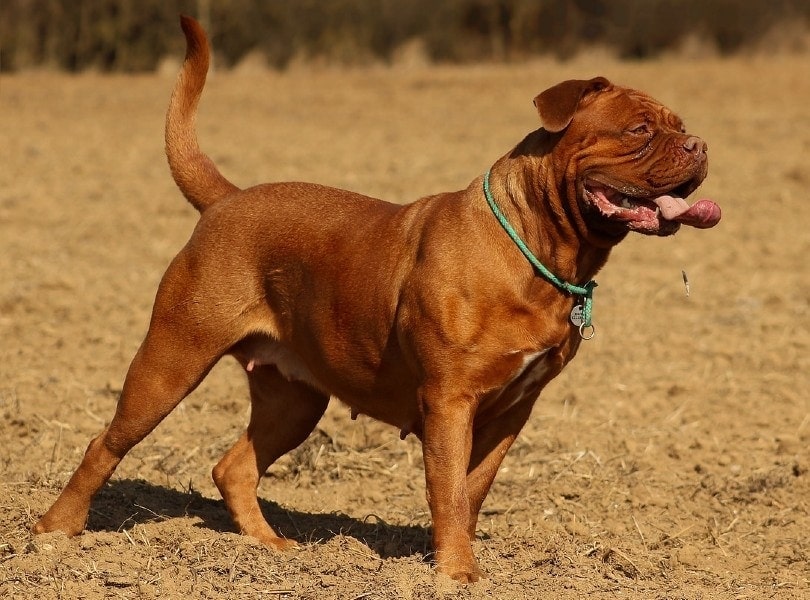
Exercise
French Mastiffs do well with an hour or less of exercise daily. Exercise should be limited to low-impact workouts, like swimming, when younger than 18 months to prevent strain on joints and bones.
Training
As we said, no dog is easy to train, but French Mastiffs are quite the challenge. This breed requires owners with experience raising dogs.
French Mastiffs are sensitive and must trust their trainer and owner to excel in training. Positive reinforcement is best combined with a disciplined training program.
Grooming
One of the biggest hurdles with French Mastiffs is their grooming regime. Their fur coat only requires a simple wipe-down from time to time. However, French Mastiffs drool excessively. A towel is a must at all times. Their facial wrinkles also require weekly, sometimes daily, treatment to prevent infection.
Do French Mastiffs Make Good Family Dogs?
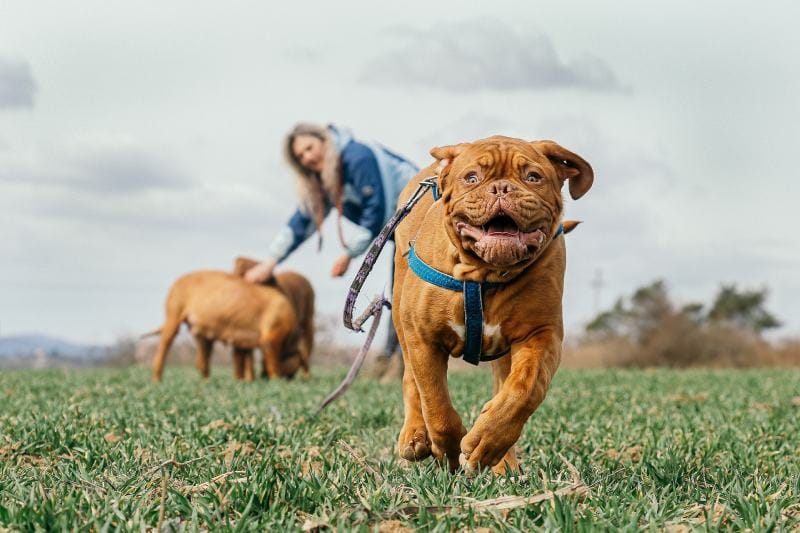
French Mastiffs are large and powerful but sensitive and affectionate simultaneously. They can do well around children as long as the children understand how to handle dogs.
These drooly dogs are territorial and reserved around strangers, so they won’t take to new people immediately. They also quickly notice changes in their environment and don’t do well with families that move around a lot.
Unfortunately, they don’t live long, as this breed’s maximum lifespan is 8 years. But with disciplined training and a family experienced with handling dogs, the French Mastiff can live a happy life.
Suitable for:
French Mastiffs are best for semi-active families who are rooted in where they live and have experience handling dogs.
Which Breed Is Right for You?
Bullmastiffs are more popular simply because they tolerate family life better than French Mastiffs. However, that doesn’t mean the French Mastiff isn’t a good fit for your home.
The biggest differences between the dogs are adaptability and grooming. Bullmastiffs don’t require as much grooming and can handle change better than French Mastiffs. Still, Bullmastiffs need a strict routine and rules to excel. French Mastiffs need families who stay in one place and are willing to keep up with the drooling and wrinkle maintenance.
In either case, both dogs will do best with owners who understand dogs and are willing to undergo extensive training—a few puppy classes won’t do.
Decide what’s right for you and your household. And when you do, we’re confident your new friend will be the happiest dog because you did your research and knew exactly what you needed.
See also:
- French Mastiff vs. English Mastiff: The Key Differences (With Pictures)
- Bullmastiff vs. Cane Corso: The Differences (With Pictures)
Featured Image Credit: Left – Bullmastiff (Saeed Khokhar, Pexels) | Right – French Mastiff (David Charles Cottam, Shutterstock)




